Climbing Mount Kilimanjaro has always been one of my biggest travel dreams. There’s something so magical about this mountain, and I’ve been drawn to it for as long as I can remember. As someone who loves nature and feels at peace in the wild, I have always felt that standing at the top of Kilimanjaro is the ultimate way to connect with the earth and nature. But I’ll admit, I never thought it was something I’d be able to do. I’m not a professional climber or an athlete, and the thought of taking on such a massive challenge seemed out of my reach.
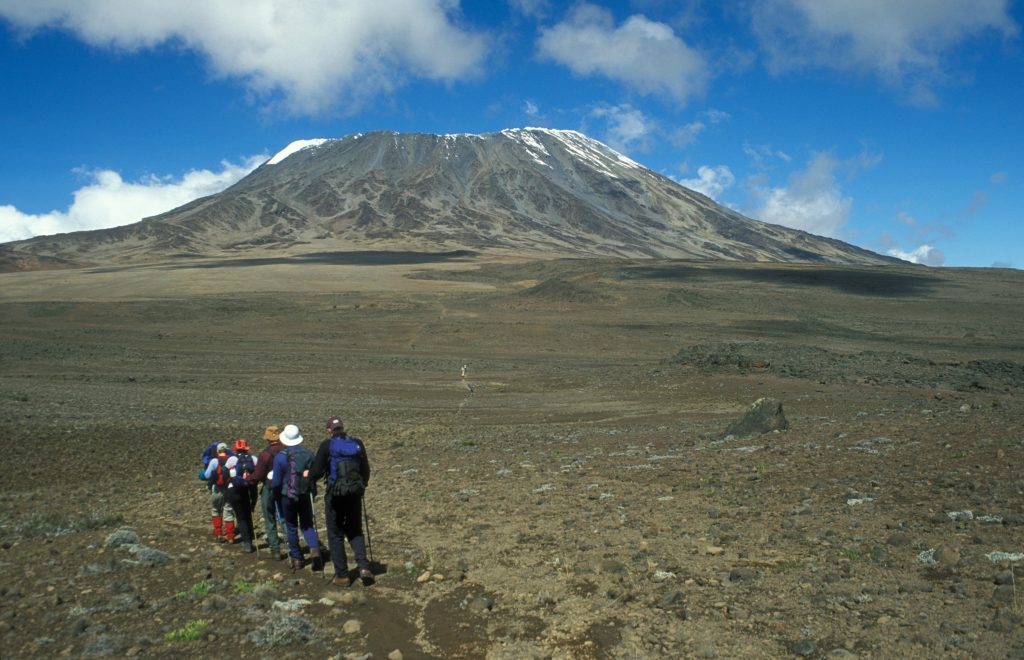
However, as I started digging deeper, I realized something incredible: with the right preparation, the right guides, and the right pace, Kilimanjaro is something many of us can achieve—even if we’re not expert climbers. It’s not about being a mountain pro; it’s about embracing the journey, going at a comfortable pace, and letting the experts help guide the way.
In this article, I’ll share everything I’ve learned about how climbing Kilimanjaro is possible, even for people like me who love the outdoors but might not have much experience with high-altitude climbs. I’ll also include insights from experienced climbers and guides at Altezza Travel, who help make this journey achievable while ensuring safety and comfort every step of the way.
And here’s the best part: Altezza Travel offers a 12-day tour that combines both a climb of Kilimanjaro and an African safari. Two incredible bucket-list experiences in one trip. How amazing is that? But for now, let’s focus on how this dream of climbing Kilimanjaro can be a reality, thanks to the right support and a little bit of preparation.
So, if you’ve ever thought that climbing Kilimanjaro was an impossible dream, keep reading. By the end of this, I hope you’ll feel as ready as I do to take on this unforgettable adventure.
Why Kilimanjaro is Within Reach for Many (Even Non-Climbers)
When I first thought about climbing Kilimanjaro, I assumed you had to be some sort of mountain expert, but that’s not the case at all. Yes, it’s a challenge, but with the right preparation, it’s something most people with moderate fitness can take on. If you can comfortably walk or run 5–10 miles and enjoy being active, you’re already on the right track.
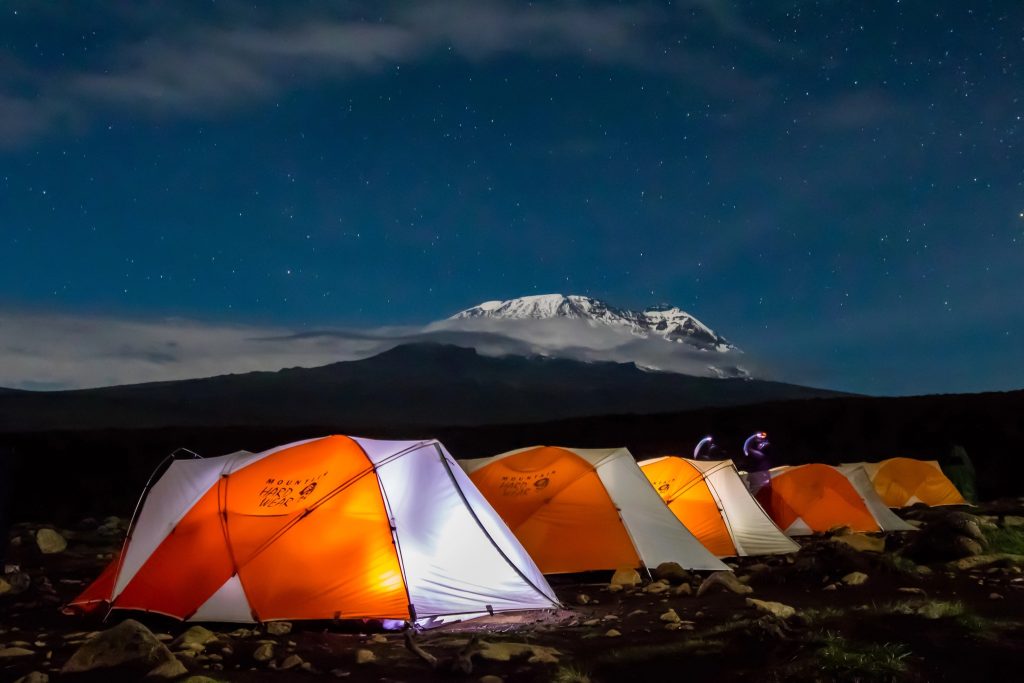
The most important thing is pacing yourself. The climb isn’t about speed; it’s about going at a steady, manageable pace. That’s why the longer 7–8 day routes, like the Lemosho or Machame routes, are the best options, they give you more time to acclimatize and reduce the risk of altitude sickness.
And here’s where the guides come in—they’re experts at helping you stay on track. As one climber put it, “The guides really make sure you go at the right pace. It’s slow at first, but it’s worth it in the end. Without them, I wouldn’t have made it.”
It’s not about being a super athlete. It’s about being prepared, taking it slow, and having the right team to guide you every step of the way.
Choosing the Right Tour and Route to Maximize Success
One of the biggest factors in successfully reaching the summit of Kilimanjaro is picking the right route and tour. Since the climb isn’t a race, having a route that’s paced properly for acclimatization is key. That’s why Altezza Travel recommends the Lemosho, Machame, and Marangu routes, depending on what you’re looking for.
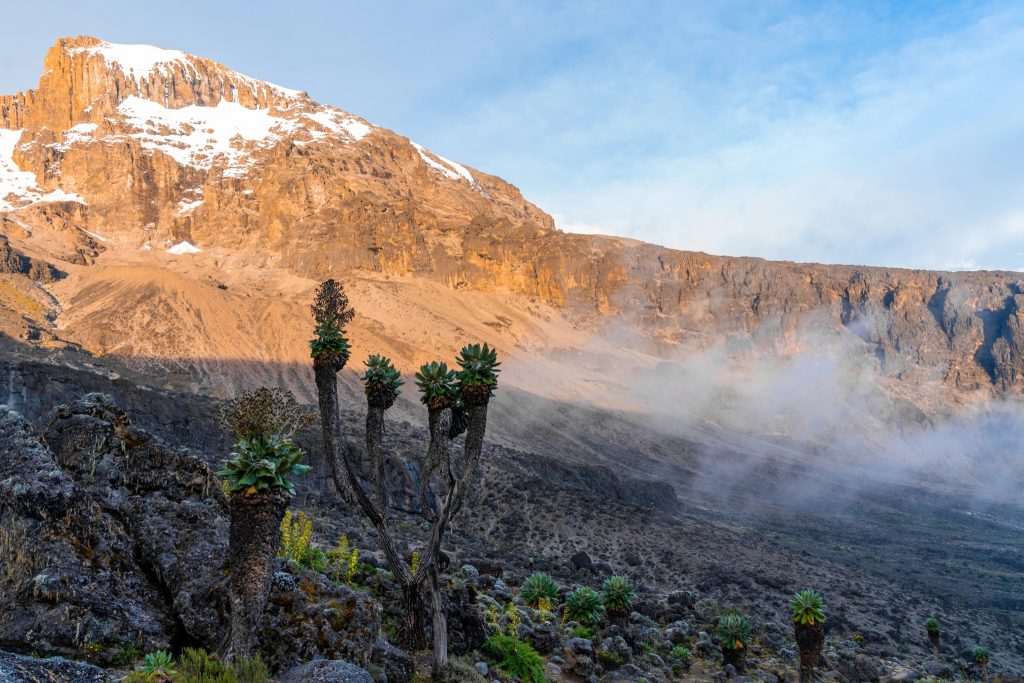
- Lemosho Route: This is a longer, quieter route that’s perfect for first-timers. It gives you more time to acclimatize, which helps reduce altitude sickness and makes for a more comfortable experience.
- Machame Route: Known for its scenic views, this route is a bit more challenging but still manageable for beginners. The slower pace here gives you the best of both worlds: beautiful scenery and a better chance to adjust to the altitude.
- Marangu Route: This is the easiest of the three and the only one that offers hut accommodation (as opposed to camping). If you prefer sleeping indoors, this route might be for you, but it’s also a shorter route, so you won’t have as much time to adjust to the altitude.
No matter which route you choose, one thing is certain: going with a professional guide and having a tour that ensures a steady pace and proper acclimatization will make all the difference. As one climber said, “The guides were there every step of the way, making sure we kept a steady pace. I never felt rushed, and I could enjoy the journey.”
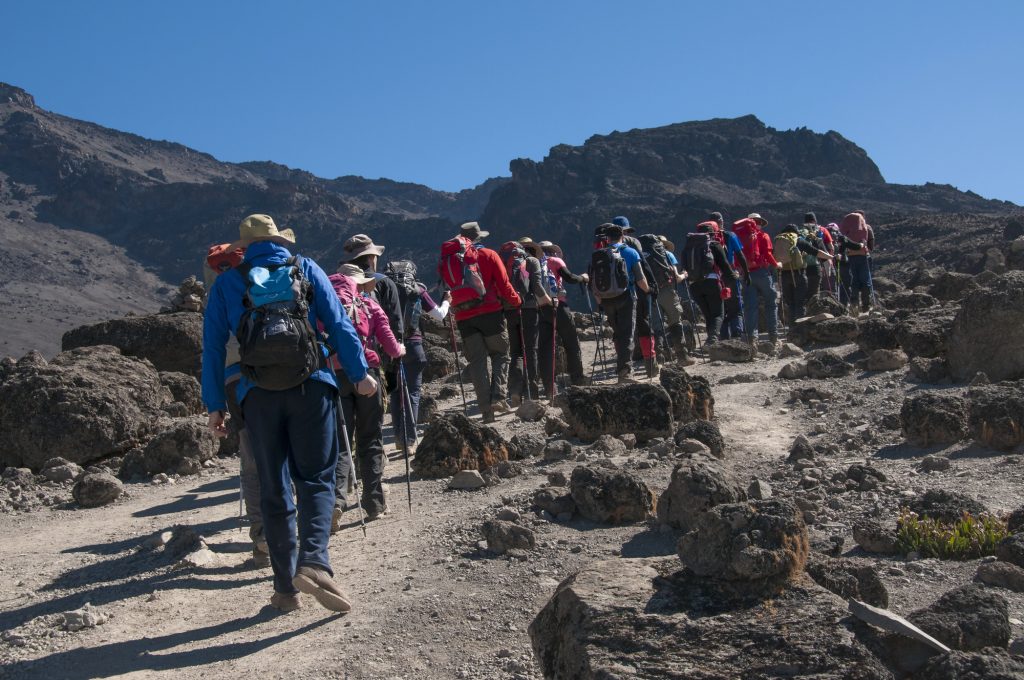
Whether you’re looking for a quiet, scenic trek or a faster route, the right tour will help ensure your success. And with Altezza Travel, you’re not just picking a route, you’re also picking a team that’s there to guide and support you every step of the way. All you have to do is read their more than 1,700 five-star reviews. I got emotional reading them. Altezza makes even the most inexperienced climbers feel safe and holds their hand every step of the way! This is what you wnat if you are looking to climb Kilimanjaro!
What to Expect on the Climb
When you start your climb up Kilimanjaro, don’t expect it to be an easy walk—this is still a big challenge. But it’s not about pushing yourself to the limit. It’s about going at a steady pace, taking in the breathtaking views, and soaking up the experience.
One of the coolest things about Kilimanjaro is how the landscape changes as you climb. You start in lush rainforests, then move through moorlands, and finally get up to the alpine desert and icy summit. Each day brings something new, which keeps the climb exciting and makes every step feel rewarding.
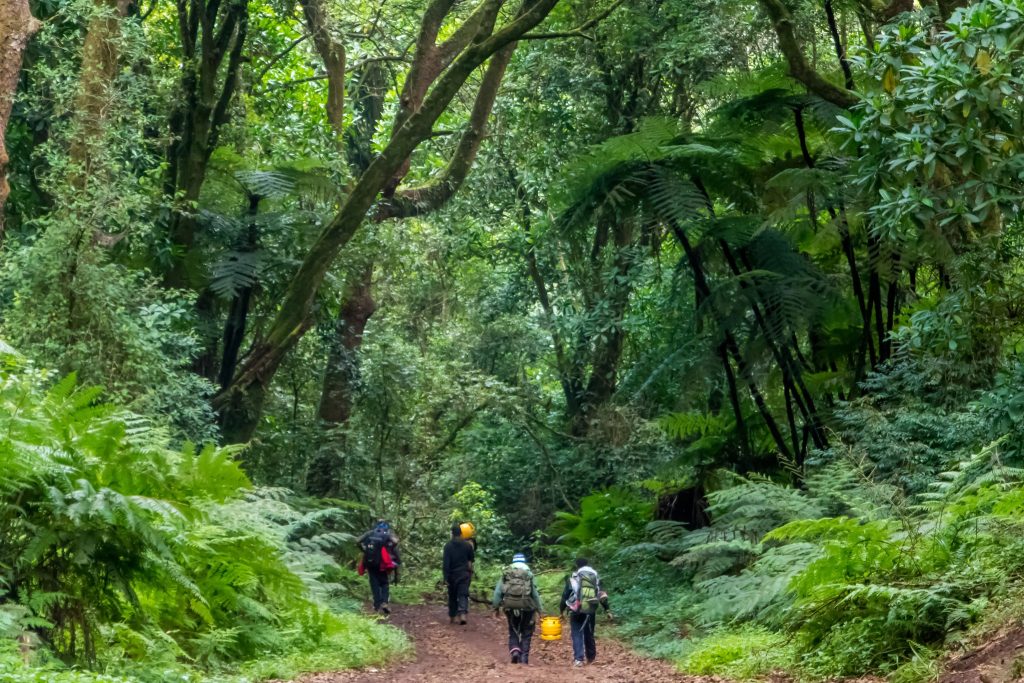
But the biggest thing to remember is the pace. You’ll be hearing the word “pole pole” (which means “slowly, slowly” in Swahili) a lot from your guides. It might feel frustrating at first, like, why are we walking so slowly? But trust me, it’s essential. Taking it slow allows your body to adjust to the altitude, which is the key to reaching the top. As one climber shared, “I thought we were going too slow at first, but the ‘pole pole’ pace actually worked. By summit night, I was thankful for it.”
Along the way, you’ll have a chance to get to know your guides and fellow climbers. The guides are incredibly knowledgeable and will share stories about the mountain, the wildlife, and the cultures around you. Some of the best moments are when you stop, take a breather, and listen to your guides share their experiences. You’ll also bond with your group, which makes the whole journey feel like a shared adventure, not just a physical challenge.
So, expect a challenge, but also a whole lot of beauty, camaraderie, and moments of awe along the way. And remember, it’s not about how fast you go—it’s about enjoying the climb, taking in the stunning views, and making it to the top together.
Safety First: What You Need to Know
When it comes to climbing Kilimanjaro, safety is a top priority and that doesn’t mean just physical safety, but also being prepared for the altitude, the weather, and the physical demands of the climb. It’s a big mountain, so knowing how to take care of yourself along the way is key to having a successful and enjoyable experience.
One of the most important things to keep in mind is altitude sickness. As you climb higher, the air gets thinner, and your body needs time to adjust. That’s why taking it slow and allowing your body to acclimate is so important. This is where having an experienced guide really makes a difference. Your guides will keep a close eye on how you’re doing and will make sure you’re adjusting properly to the altitude.
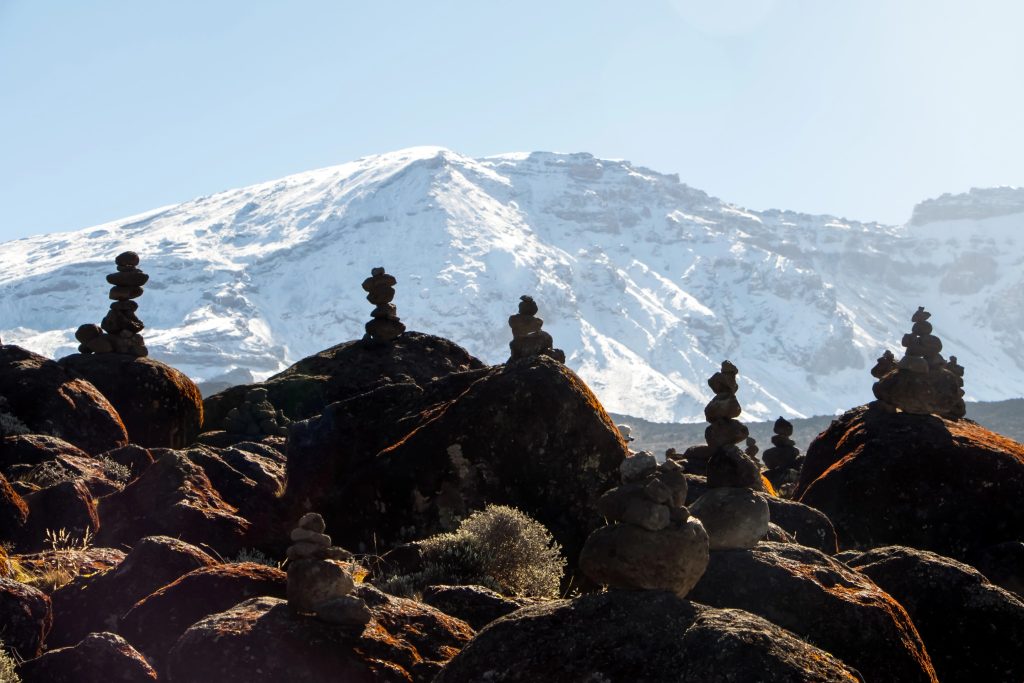
As one climber shared, “The guides were on top of everything. They made sure we were drinking enough water, eating right, and adjusting to the altitude. When things got tough on summit night, they were right there, offering help and encouragement.”
It’s also a good idea to talk to your doctor before you go, just to make sure you’re physically prepared for the climb. Even if you’re in good shape, climbing at high altitudes can put a strain on your body, so it’s always best to get professional advice. And don’t forget about proper gear! You’ll want to make sure you have everything you need to stay warm and dry because the weather on the mountain can be unpredictable, to say the least.
Your guides will also help you with the basics, like staying hydrated (you’ll need a lot of water) and eating regularly. The key is to listen to your body, keep a steady pace, and don’t be afraid to ask for help if you need it. Kilimanjaro is a big climb, but with the right support and preparation, it’s definitely doable.
The Ultimate Travel Dream: Kilimanjaro and Safari Combo
Climbing Kilimanjaro is a dream in itself, but what if you could follow it up with a safari? The thrill of seeing wildlife up close—watching lions, elephants, and zebras roam freely in their natural habitat—adds a whole new layer to the adventure. A safari isn’t just time in the wild; it’s about feeling the heartbeat of Africa, seeing the majesty of animals in their element, and experiencing a deep sense of awe that’s hard to put into words.
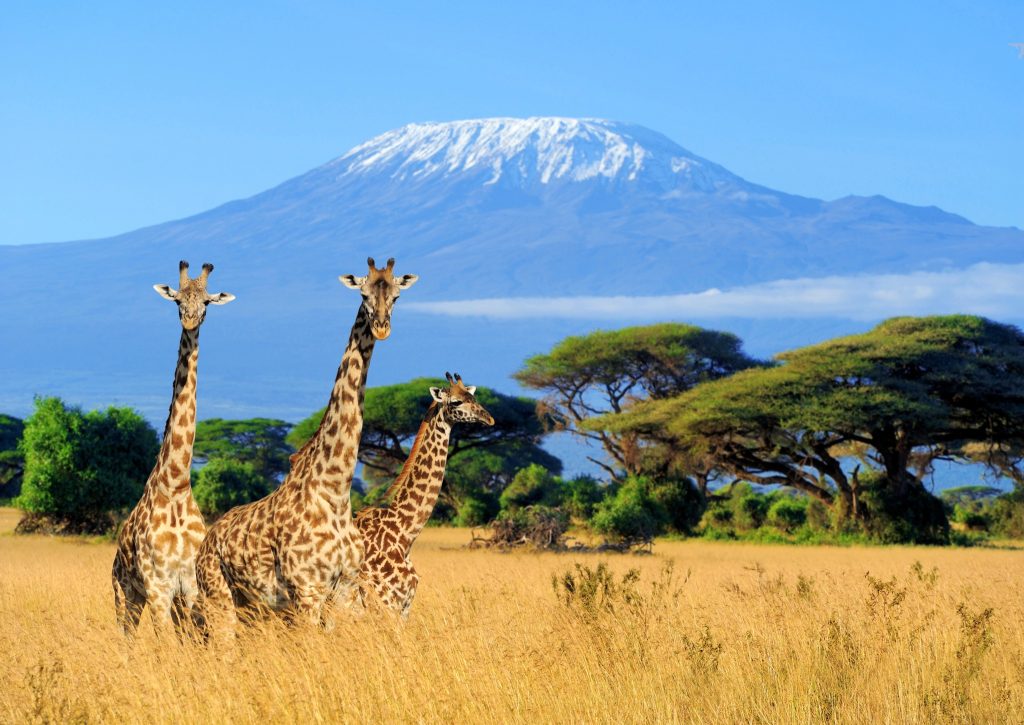
For me, combining the challenge of climbing Kilimanjaro with the magic of an African safari has always been the ultimate dream. And with Altezza Travel, it’s possible to do both in one amazing trip. Their 12-day tour lets you climb Kilimanjaro for 7 days, followed by a 2-day safari through Tarangire and Ngorongoro National Park—two of Tanzania’s most breathtaking wildlife destinations.
One climber said, “After summiting, the safari was the perfect way to relax and take it all in. The wildlife was incredible, and it was the perfect end to the journey.”
I had no idea that you could combine climbing Kilimanjaro with an African Safari! It sounds like the perfect combination of experiences for anyone who loves nature and really wants to experience different sides of Africa and what it has to offer!
Climbing Kilimanjaro is a big challenge, but it’s also one of those dreams that can be reached if you have the right mindset and preparation. It’s not about being an expert climber—it’s about taking your time, enjoying the journey, and embracing the amazing views along the way. With the right pace and support, it’s a climb that many people, even those without much climbing experience, can achieve.
And if you’ve ever dreamed of going on an African safari, why not do both? The idea of climbing Kilimanjaro and then witnessing Africa’s incredible wildlife is a once-in-a-lifetime experience that will stay with you forever.
So, if this has sparked something in you and made you think, “Hey, maybe I can do this,” then why not take that first step? Whether it’s learning more, asking questions, or just daydreaming about the adventure, Kilimanjaro and a safari might be closer than you think.
More Adventure Travel Destinations
Still buzzing from the idea of climbing Mount Kilimanjaro? Keep that momentum going with these adventure travel destinations that blend wild landscapes, living culture, and big bucket list energy. From Himalayan travel in Bhutan and Darjeeling to Guatemala adventure travel deep in the jungle at Semuc Champey, these guides include practical tips, highlights, and where to stay so you can start planning your next trip.
-
5 Reasons Why You Will Fall In Love With Bhutan – Traditional architecture, warm people, dramatic Himalayan valleys, and a deeply rooted Buddhist culture make Bhutan a dream for travelers who love nature with meaning. You’ll also find notes on conservation and how to visit responsibly.
-
Top Tips for Visiting Darjeeling: Best Things to Do, Where to Stay, and More – Ride (or at least see) the historic Darjeeling Himalayan Railway “Toy Train,” wander tea estates, and catch sunrise views from Tiger Hill. This guide covers top things to do, local culture stops, and lodging options that make Darjeeling a great Eastern Himalayas adventure base.
-
Ultimate Guide for Visiting Semuc Champey in Guatemala – Swim in turquoise limestone pools hidden in the Alta Verapaz jungle, explore river caves, and get insider planning tips from a Guatemalan traveler who’s been visiting since childhood. Updated access info helps you plan this off‑the‑beaten‑path Guatemala adventure with less stress.
- How to Choose the Best Vacation Rental for Your Family Trip (Expert Tips for Stress-Free Planning) - January 6, 2026
- Cranberry Brie Cake Grazing Board (An Elegant Holiday Cheese Centerpiece) - December 19, 2025
- Easy Cranberry Cocktails You Can Make All Year - December 18, 2025


